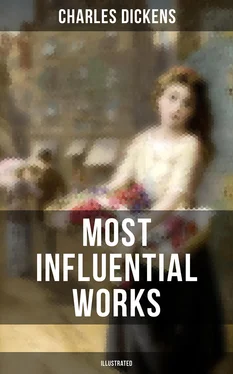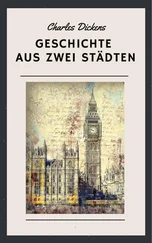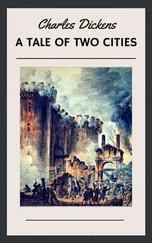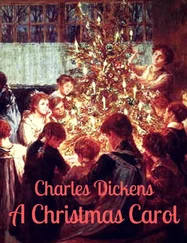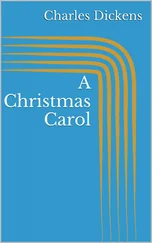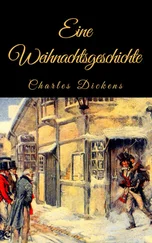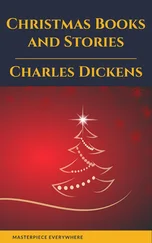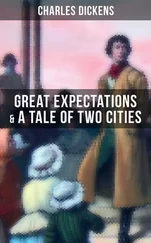‘Give us a touch of the fortune-telling pictures about me.’
‘I was passing on to them, Charley,’ said the girl, who had not changed her attitude since she began, and who now mournfully shook her head; ‘the others were all leading up. There are you—’
‘Where am I, Liz?’
‘Still in the hollow down by the flare.’
‘There seems to be the deuce-and-all in the hollow down by the flare,’ said the boy, glancing from her eyes to the brazier, which had a grisly skeleton look on its long thin legs.
‘There are you, Charley, working your way, in secret from father, at the school; and you get prizes; and you go on better and better; and you come to be a—what was it you called it when you told me about that?’
‘Ha, ha! Fortune-telling not know the name!’ cried the boy, seeming to be rather relieved by this default on the part of the hollow down by the flare. ‘Pupil-teacher.’
‘You come to be a pupil-teacher, and you still go on better and better, and you rise to be a master full of learning and respect. But the secret has come to father’s knowledge long before, and it has divided you from father, and from me.’
‘No it hasn’t!’
‘Yes it has, Charley. I see, as plain as plain can be, that your way is not ours, and that even if father could be got to forgive your taking it (which he never could be), that way of yours would be darkened by our way. But I see too, Charley—’
‘Still as plain as plain can be, Liz?’ asked the boy playfully.
‘Ah! Still. That it is a great work to have cut you away from father’s life, and to have made a new and good beginning. So there am I, Charley, left alone with father, keeping him as straight as I can, watching for more influence than I have, and hoping that through some fortunate chance, or when he is ill, or when—I don’t know what—I may turn him to wish to do better things.’
‘You said you couldn’t read a book, Lizzie. Your library of books is the hollow down by the flare, I think.’
‘I should be very glad to be able to read real books. I feel my want of learning very much, Charley. But I should feel it much more, if I didn’t know it to be a tie between me and father.—Hark! Father’s tread!’
It being now past midnight, the bird of prey went straight to roost. At mid-day following he reappeared at the Six Jolly Fellowship Porters, in the character, not new to him, of a witness before a Coroner’s Jury.
Mr Mortimer Lightwood, besides sustaining the character of one of the witnesses, doubled the part with that of the eminent solicitor who watched the proceedings on behalf of the representatives of the deceased, as was duly recorded in the newspapers. Mr Inspector watched the proceedings too, and kept his watching closely to himself. Mr Julius Handford having given his right address, and being reported in solvent circumstances as to his bill, though nothing more was known of him at his hotel except that his way of life was very retired, had no summons to appear, and was merely present in the shades of Mr Inspector’s mind.
The case was made interesting to the public, by Mr Mortimer Lightwood’s evidence touching the circumstances under which the deceased, Mr John Harmon, had returned to England; exclusive private proprietorship in which circumstances was set up at dinner-tables for several days, by Veneering, Twemlow, Podsnap, and all the Buffers: who all related them irreconcilably with one another, and contradicted themselves. It was also made interesting by the testimony of Job Potterson, the ship’s steward, and one Mr Jacob Kibble, a fellow-passenger, that the deceased Mr John Harmon did bring over, in a hand-valise with which he did disembark, the sum realized by the forced sale of his little landed property, and that the sum exceeded, in ready money, seven hundred pounds. It was further made interesting, by the remarkable experiences of Jesse Hexam in having rescued from the Thames so many dead bodies, and for whose behoof a rapturous admirer subscribing himself ‘A friend to Burial’ (perhaps an undertaker), sent eighteen postage stamps, and five ‘Now Sir’s to the editor of the Times.
Upon the evidence adduced before them, the Jury found, That the body of Mr John Harmon had been discovered floating in the Thames, in an advanced state of decay, and much injured; and that the said Mr John Harmon had come by his death under highly suspicious circumstances, though by whose act or in what precise manner there was no evidence before this Jury to show. And they appended to their verdict, a recommendation to the Home Office (which Mr Inspector appeared to think highly sensible), to offer a reward for the solution of the mystery. Within eight-and-forty hours, a reward of One Hundred Pounds was proclaimed, together with a free pardon to any person or persons not the actual perpetrator or perpetrators, and so forth in due form.
This Proclamation rendered Mr Inspector additionally studious, and caused him to stand meditating on river-stairs and causeways, and to go lurking about in boats, putting this and that together. But, according to the success with which you put this and that together, you get a woman and a fish apart, or a Mermaid in combination. And Mr Inspector could turn out nothing better than a Mermaid, which no Judge and Jury would believe in.
Thus, like the tides on which it had been borne to the knowledge of men, the Harmon Murder—as it came to be popularly called—went up and down, and ebbed and flowed, now in the town, now in the country, now among palaces, now among hovels, now among lords and ladies and gentlefolks, now among labourers and hammerers and ballast-heavers, until at last, after a long interval of slack water it got out to sea and drifted away.
Chapter 4.
The R. Wilfer Family
Table of Contents
Reginald Wilfer is a name with rather a grand sound, suggesting on first acquaintance brasses in country churches, scrolls in stained-glass windows, and generally the De Wilfers who came over with the Conqueror. For, it is a remarkable fact in genealogy that no De Any ones ever came over with Anybody else.
But, the Reginald Wilfer family were of such commonplace extraction and pursuits that their forefathers had for generations modestly subsisted on the Docks, the Excise Office, and the Custom House, and the existing R. Wilfer was a poor clerk. So poor a clerk, though having a limited salary and an unlimited family, that he had never yet attained the modest object of his ambition: which was, to wear a complete new suit of clothes, hat and boots included, at one time. His black hat was brown before he could afford a coat, his pantaloons were white at the seams and knees before he could buy a pair of boots, his boots had worn out before he could treat himself to new pantaloons, and, by the time he worked round to the hat again, that shining modern article roofed-in an ancient ruin of various periods.
If the conventional Cherub could ever grow up and be clothed, he might be photographed as a portrait of Wilfer. His chubby, smooth, innocent appearance was a reason for his being always treated with condescension when he was not put down. A stranger entering his own poor house at about ten o’clock P.M. might have been surprised to find him sitting up to supper. So boyish was he in his curves and proportions, that his old schoolmaster meeting him in Cheapside, might have been unable to withstand the temptation of caning him on the spot. In short, he was the conventional cherub, after the supposititious shoot just mentioned, rather grey, with signs of care on his expression, and in decidedly insolvent circumstances.
He was shy, and unwilling to own to the name of Reginald, as being too aspiring and self-assertive a name. In his signature he used only the initial R., and imparted what it really stood for, to none but chosen friends, under the seal of confidence. Out of this, the facetious habit had arisen in the neighbourhood surrounding Mincing Lane of making christian names for him of adjectives and participles beginning with R. Some of these were more or less appropriate: as Rusty, Retiring, Ruddy, Round, Ripe, Ridiculous, Ruminative; others, derived their point from their want of application: as Raging, Rattling, Roaring, Raffish. But, his popular name was Rumty, which in a moment of inspiration had been bestowed upon him by a gentleman of convivial habits connected with the drug-markets, as the beginning of a social chorus, his leading part in the execution of which had led this gentleman to the Temple of Fame, and of which the whole expressive burden ran:
Читать дальше
